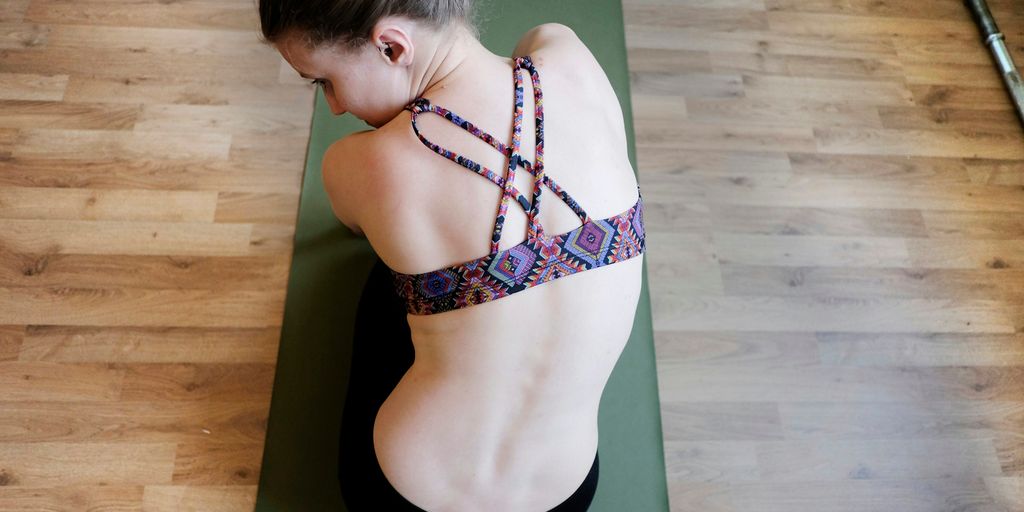
Choosing the Perfect Yoga Mat Size for Your Practice
Choosing the right yoga mat size is important for your practice. The size of your mat can affect your comfort, safety, and how well you can do different poses. This guide will help you understand the different sizes available and how to pick the best one for you.
Key Takeaways
- The size of your yoga mat can greatly affect your practice and comfort.
- Standard yoga mat sizes work for most people, but some may need special sizes.
- Your body type and personal preferences should guide your choice of mat size.
- Specialty mats are available for specific practices like hot yoga, travel, and meditation.
- Proper care and environmental considerations are important when choosing and maintaining a yoga mat.
Understanding the Importance of Yoga Mat Size
Impact on Your Practice
Choosing the right yoga mat size can greatly affect your practice. A mat that is too small might limit your movements, while a mat that is too large can be cumbersome. Finding the perfect size ensures you have enough space to move freely and comfortably.
Comfort and Support
The size of your yoga mat also plays a role in how comfortable and supported you feel during your practice. A mat that fits your body well can provide better cushioning and support, reducing strain on your joints. This is especially important for poses that require you to be on your knees or elbows.
Safety Considerations
Safety is another key factor when it comes to yoga mat size. A mat that is too small can increase the risk of slipping or falling, especially during more dynamic poses. On the other hand, a mat that is too large might not fit well in your practice space, causing you to trip or stumble. Ensuring your mat is the right size can help you practice safely and confidently.
Standard Yoga Mat Sizes and Their Uses
Dimensions and Specifications
Yoga mats come in various sizes, but the most common dimensions are 24 inches wide and 68 inches long. Some mats are longer, up to 72 or 74 inches, to accommodate taller individuals. The thickness of yoga mats also varies, typically ranging from 1/16 inch (thin travel mats) to 1/4 inch (thicker mats for extra cushioning).
| Size (inches) | Width | Length | Thickness |
|---|---|---|---|
| Standard | 24 | 68 | 1/8 |
| Long | 24 | 72-74 | 1/8-1/4 |
| Travel | 24 | 68 | 1/16 |
Best Practices for Standard Sizes
When choosing a standard size yoga mat, consider your height and the type of yoga you practice. For most people, a standard 68-inch mat works well. However, if you are taller than 6 feet, you might find a longer mat more comfortable. Thicker mats provide more cushioning, which is beneficial for practices that involve a lot of floor work or for those with sensitive joints.
Who Should Use Standard Sizes
Standard size yoga mats are suitable for most practitioners. They are ideal for beginners, as well as those who practice Hatha, Vinyasa, or other common styles of yoga. If you are unsure about what size to choose, starting with a standard mat is a safe bet. Personal preference and comfort should always guide your final decision.
Choosing the Right Yoga Mat Size for Your Body Type
Height and Weight Considerations
When picking a yoga mat, your height and weight are key factors. Taller individuals might need longer mats to ensure they stay on the mat during stretches. Heavier individuals may prefer thicker mats for added comfort and support.
Flexibility and Range of Motion
Your flexibility and range of motion also play a role. If you have a wide range of motion, a larger mat can provide the space you need to move freely. Conversely, if your movements are more contained, a standard size might be sufficient.
Personal Preferences
Personal preferences are crucial when choosing a mat. Some people like extra cushioning, while others prefer a firmer surface. Consider what feels best for you and enhances your practice. Comfort and ease of use should guide your choice.
Finding the right yoga mat size can make a big difference in your practice. It can improve your comfort, safety, and overall experience.
Specialty Yoga Mat Sizes for Different Practices
Mats for Hot Yoga
Hot yoga requires mats that can handle a lot of sweat. These mats are usually made from materials that offer excellent grip even when wet. Choosing the right yoga mat dimensions for your practice can make a big difference in your comfort and stability. Look for mats with extra thickness to provide better cushioning and support during intense sessions.
Mats for Travel
Travel mats are designed to be lightweight and easy to carry. They are often thinner than regular mats, making them easy to fold or roll up. If you travel a lot, a travel mat can be a great option. These mats are also perfect for those who like to practice yoga outdoors or in different locations.
Mats for Meditation
Meditation mats are usually thicker and more cushioned to provide extra comfort during long sitting sessions. They are often made from soft materials that feel good against the skin. If you spend a lot of time meditating, investing in a good meditation mat can make your practice more enjoyable.
When selecting a specialty yoga mat, consider the specific needs of your practice. The right mat can enhance your overall yoga experience and make each session more enjoyable.
How to Measure and Test Yoga Mat Sizes
Measuring Your Space
Before buying a yoga mat, it's important to measure the area where you'll be practicing. Use a tape measure to find the length and width of your space. Make sure the mat fits comfortably without touching walls or furniture. This will help you move freely during your practice.
Testing for Comfort
When testing a yoga mat, consider its thickness and material. A mat that's too thin might not provide enough cushioning, while one that's too thick could affect your balance. Try different mats to see which one feels best for you. Comfort is key to a good practice.
Evaluating Durability
Durability is another important factor. Look for mats made from high-quality materials that can withstand regular use. Check for signs of wear and tear, especially if you practice often. A durable mat will last longer and provide better support over time.
Finding the right yoga mat size can make a big difference in your practice. Take the time to measure, test, and evaluate different options to find the perfect fit for you.
Caring for Your Yoga Mat
Cleaning Tips
Keeping your yoga mat clean is essential for both hygiene and longevity. Regular cleaning helps remove sweat, dirt, and oils that can break down the mat's material over time. Here are some simple steps to follow:
- Wipe down your mat after each use with a damp cloth.
- Use a mild soap and water solution for a deeper clean once a week.
- Avoid using harsh chemicals or abrasive scrubbers.
- Let your mat air dry completely before rolling it up.
Storage Solutions
Proper storage can extend the life of your yoga mat. Store your mat in a cool, dry place away from direct sunlight. Consider these tips:
- Roll your mat loosely to prevent creases.
- Use a yoga mat bag or strap for easy transport and protection.
- Keep your mat away from sharp objects that could cause tears.
Maintaining Durability
To ensure your yoga mat lasts as long as possible, follow these maintenance tips:
- Rotate your mat regularly to even out wear and tear.
- Avoid wearing shoes on your mat to prevent damage.
- Check your mat for signs of wear and replace it if it becomes too thin or slippery.
Taking good care of your yoga mat not only helps it last longer but also enhances your practice by providing a clean and supportive surface.
Environmental Impact of Different Yoga Mat Sizes
Material Considerations
When choosing a yoga mat, it's important to think about the materials used. Eco-friendly mats are made from sustainable materials and are better for the environment. Common materials include PVC, rubber, and TPE. PVC is durable but not biodegradable, while rubber and TPE are more environmentally friendly.
Sustainability Practices
Manufacturers are now focusing on sustainability. They use recycled materials and eco-friendly processes. Look for brands that prioritize sustainable practices. This can include reducing waste during production and using non-toxic dyes.
Eco-Friendly Brands
Some brands stand out for their commitment to the environment. They offer mats made from natural rubber, jute, or organic cotton. These materials are not only good for the planet but also provide excellent grip and comfort. Consider brands that are transparent about their environmental impact and have certifications to back their claims.
Choosing an eco-friendly yoga mat helps reduce your carbon footprint and supports sustainable practices in the industry.
Choosing the right size for your yoga mat can make a big difference for the environment. Smaller mats use fewer materials and create less waste, while larger mats offer more space but may have a bigger environmental footprint. Want to learn more about how your yoga mat choice impacts the planet? Visit our website for more information and to explore our eco-friendly options.
Conclusion
Choosing the right yoga mat size is important for a good practice. It can make your yoga sessions more comfortable and enjoyable. Remember to think about your height, the space you have, and the type of yoga you do. A mat that's too small can be uncomfortable, while a mat that's too big might be hard to carry around. Take your time to find the perfect fit for you. With the right mat, you'll be able to focus better and get the most out of your yoga practice.
Frequently Asked Questions
Why is the size of a yoga mat important?
The size of a yoga mat is important because it affects your comfort, support, and safety during practice. A mat that is too small might not provide enough space for your movements, while a mat that is too large can be cumbersome.
What are the standard sizes for yoga mats?
Standard yoga mats usually measure around 24 inches wide and 68 inches long. However, there are variations available to suit different needs and preferences.
How do I choose the right yoga mat size for my height?
To choose the right mat size for your height, make sure the mat is at least as long as your height. This ensures that you can lie down comfortably without your head or feet hanging off the mat.
Are there special mats for different types of yoga?
Yes, there are specialty mats designed for different types of yoga. For example, mats for hot yoga are more absorbent, travel mats are lighter and more compact, and meditation mats are thicker for extra comfort.
How can I test if a yoga mat is the right size for me?
You can test a yoga mat by laying it out and performing a few poses. Check if you have enough space to move freely and if the mat provides the comfort and support you need.
What should I consider about the environmental impact of yoga mats?
When considering the environmental impact, look at the materials used in the mat. Eco-friendly mats are made from sustainable materials and are often biodegradable. Some brands also follow sustainable practices in their production processes.


